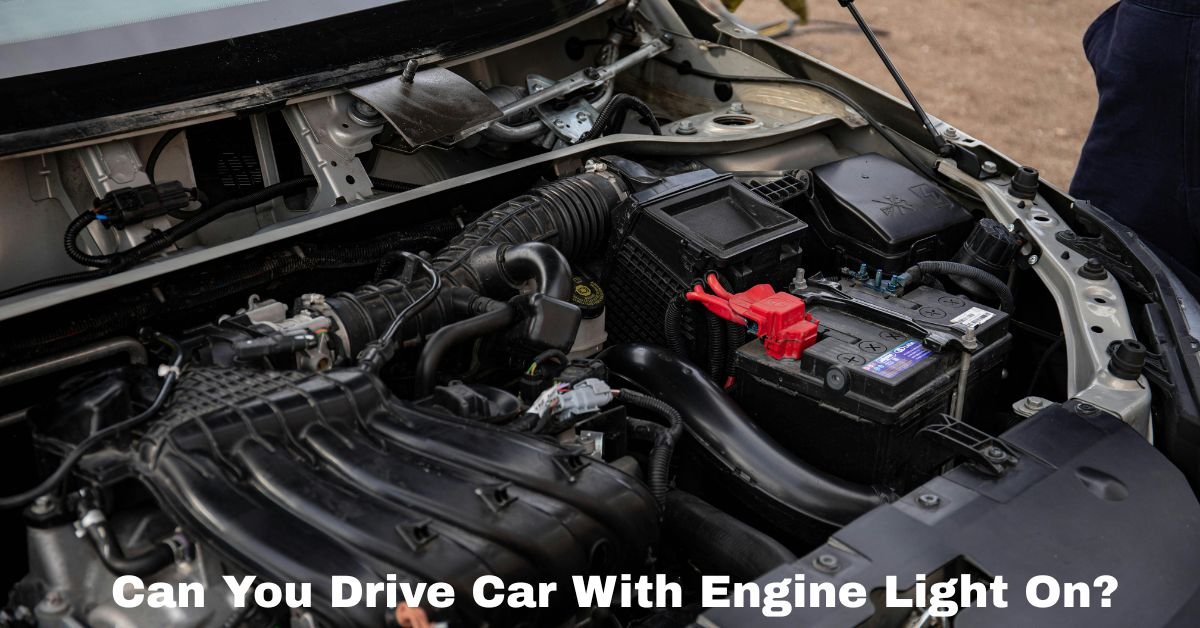If you’ve ever been driving and noticed the dreaded “Check Engine” light turn on, you may have found yourself wondering: can you keep driving with the engine light on? While it’s a common experience for car owners, it’s one that often comes with a lot of uncertainty. The engine light can be a simple warning or an indication of a serious issue, and knowing whether it’s safe to drive with it illuminated is crucial for the health of your vehicle.
Can You Drive a Car with the Engine Light On?
What Does the Check Engine Light Mean?
The “Check Engine” light, sometimes referred to as the “Malfunction Indicator Light” (MIL), is a component of the onboard diagnostic system in your vehicle. When your vehicle’s engine control unit (ECU) detects an issue or malfunction within the engine, exhaust, or other related systems, the light will turn on. The engine light can appear for a wide range of reasons, from a minor issue like a loose gas cap to more significant concerns like a faulty catalytic converter or a misfiring engine.
When the engine light is on, is it safe to drive?
Whether it’s safe to drive with the engine light on depends on the nature of the problem causing the warning light to appear. Here’s a breakdown of different scenarios:
-
Flashing Engine Light: Immediate Attention Required
If the engine light is flashing, it’s a sign that the problem is severe and requires immediate attention. A flashing light often indicates that your engine is misfiring, which can damage the catalytic converter and lead to expensive repairs if not addressed quickly. In this case, it’s best to stop driving and have your vehicle towed to a mechanic for a thorough inspection.
-
Steady Engine Light: Less Urgent, But Still Concerning
A steady, non-flashing engine light often signals a less urgent issue, but it should still be addressed soon. Common issues that trigger a steady engine light include things like a loose gas cap, a worn-out oxygen sensor, or issues with the emission control system. While your car may still be drivable, ignoring the warning could lead to decreased fuel efficiency or more significant engine damage down the road.
-
Other Indicators: Pay Attention to Performance Changes
If your engine light comes on and you notice a decrease in performance—such as stalling, rough idling, or poor acceleration—then it’s a sign that the issue could be more serious. In this case, it’s safer to avoid driving the vehicle and get it checked by a professional immediately.
Must Read: Can I Put Non-Ethanol Gas In My Car?

Possible Dangers of Operating a Vehicle While the Engine Light Is On
While you might think you can ignore the engine light and keep driving, there are some risks involved in doing so. Here are a few reasons why you should take the engine light seriously:
-
Further Damage to Your Engine
Ignoring the engine light, especially if it’s flashing, can cause additional damage to your engine. The issue causing the light to appear could worsen if not addressed, leading to more expensive repairs. For example, a misfiring engine can damage the catalytic converter, which is one of the most expensive parts to replace.
-
Decreased Fuel Efficiency
If the issue causing the engine light to illuminate relates to the engine’s fuel system or emission control, you might experience a drop in fuel efficiency. Driving with an inefficient engine can end up costing you more at the pump over time.
-
Increased Repair Costs
As with many things in life, addressing a problem early tends to cost less than waiting for it to escalate. Small issues, like a faulty oxygen sensor, are relatively inexpensive to fix. However, if you wait too long, the problem could affect other engine components, resulting in more costly repairs.
How Do You Proceed If the Engine Light Is On?
If the engine light comes on, here are the steps you should take:
-
Check the Gas Cap
Before panicking, check if your gas cap is tightly closed. A loose or faulty gas cap is a common cause of the engine light turning on. If you find it loose, tighten it and see if the light goes off after a short while.
-
Evaluate the Performance
Pay attention to how your car is running. If you notice any performance issues, like strange noises, poor acceleration, or difficulty starting, it’s best to stop driving and call a tow truck to get your vehicle to a mechanic.
-
Get a Diagnostic Test
Take your car to a mechanic or an auto parts store that offers free diagnostic scans. These scans can pinpoint the exact issue causing the engine light to come on, helping you understand the severity of the problem and what steps need to be taken.

Conclusion
In conclusion, while it may be tempting to continue driving with the engine light on, it’s not a risk worth taking. Whether the light is flashing or steady, addressing the issue sooner rather than later can save you from more serious damage, reduced fuel efficiency, and expensive repairs down the line. Always pay attention to how your car is performing and get a diagnostic test if needed. In the end, it’s better to be safe than sorry when it comes to the health of your engine.
